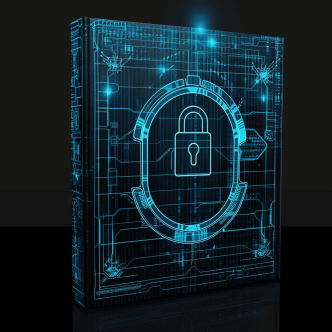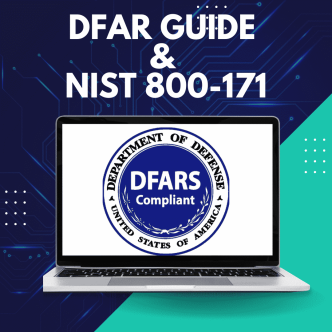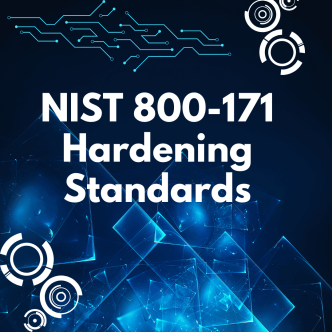What is the purpose of NIST 800-53B
NIST 800-53B, Control Baselines for Information Systems and Organizations, offers security and privacy control baselines for the Federal Government. It serves as a companion to NIST Special Publication (SP) 800-53, Revision 5, which outlines security and privacy controls for information systems and organizations.
NIST security control baselines are organized into families, such as access control, authentication, system protection, and incident response, covering physical, personnel, network, and security management aspects.
Organizations use these standards and guidelines for their security programs, customizing controls to fit their requirements and regulatory obligations. Implementing these controls helps mitigate risks, protect assets, and achieve NIST compliance.
Who are NIST Security Control Baselines 800-53 for?
NIST Security Control baselines apply to individuals and entities responsible for system security, privacy, risk management, and oversight, including roles such as authorizing officials, CIOs, security officers, program managers, engineers, developers, procurement officials, system administrators, auditors, and industry partners.
These baselines also apply to U.S. federal agencies, providing security and privacy standards to protect government information systems
What is NIST Special Publication 800-53 compliance?
NIST Special Publication 800-53 Compliance (SP 800-53 Rev. 5) offers a comprehensive set of security and privacy controls for organizations to choose from based on their risk profile and operational needs.
As a part of Rev. 5, NIST broadened the usability of these controls for various sectors, including businesses, system engineers, and IoT developers. A key change was separating control baselines and guidance from SP 800-53, moving that content to SP 800-53B. This split streamlined SP 800-53, while related guidance (such as risk management) is now covered in other documents like SP 800-37 and SP 800-53B. This update ensures greater flexibility and relevance across different industries.
What are NIST Control baselines?
Control baselines are essential for aligning security measures with the specific needs of an organization's risk profile. By categorizing systems by their impact level-low, moderate, or high-organizations can effectively select the controls needed to mitigate potential risks to confidentiality, integrity, and availability.
Control baselines
Security controls are the safeguards or countermeasures selected and implemented within an information system or an organization. In order to be in compliance with NIST SP 800-53, there are three baselines:
Confidentiality - preserving authorized restrictions on information access and disclosure, including means for protecting personal privacy and proprietary information
Integrity - guarding against improper information modification or destruction and ensuring information non-repudiation and authenticity
Availability - ensuring timely and reliable access to and use of information
Baseline categories
The responsibility for managing the effects of security risks on individuals and determining the security categorization, as well as selecting and customizing controls from security control baselines, lies with both the information security and privacy programs when processing Personally Identifiable Information (PII) within a system.
The Controls are categorized as:
| Baseline | Explanation |
| Security | Prior to selecting and customizing the suitable security control baselines for organizational systems and their respective operating environments, organizations initially assess the importance and confidentiality of the information that will be handled, stored, or transmitted by those systems.
The process of determining information criticality and sensitivity is known as security categorization. The results of security categorization help guide and inform the selection of security control baselines to protect systems and information. |
| Privacy | The set of privacy controls are selected based on the privacy selection criteria that provide a starting point for the tailoring process. In addition to the security control baselines, the Control Baselines provides an initial privacy control baseline for federal agencies to address privacy requirements and manage privacy risks that arise from the processing of Personally Identifiable Information (PII).
Privacy controls are the administrative, technical, and physical safeguards employed within a system or an organization to ensure NIST compliance with applicable privacy requirements and to manage privacy risks. |
Determining which NIST SP 800-53B control to comply with?
NIST SP 800-53 compliance presents a set of security controls. These aregrouped into baselines to provide a general protection capability for classes of systems based on impact level. Once the impact level is determined, organizations select the appropriate security control baseline.
Since the potential impact values for Confidentiality, Integrity, and Availability may not always be the same for a particular system, the highest values determine the impact level of the system. The impact level of the system, in turn, is used for the express purpose of selecting the applicable security control baseline from one of the three baselines. The three impact levels are:
- Low-impact
- Moderate-Impact
- High-impact
The generalized format for expressing the security category, SC, of an information system is:
SC information system = {(confidentiality, impact), (integrity, impact), (availability, impact)}, where the acceptable values for potential impact are LOW, MODERATE, or HIGH.
In addition to the control baselines, organizations must take into account the moderate impact and high levels of risk when selecting appropriate security measures. This ensures that controls are effectively implemented applied to systems irrespective of impact, creating a robust security environment.
Defining NIST Control Family
NIST control families refer to a categorization framework provided by NIST with each family containing a set of controls that are designed to achieve a specific security objective. These controls are organized into twenty families that are based on the type of security function or objective they address. The families are:
| Number | Control ID | Family |
| 1 | AC | Access Control |
| 2 | AT | Awareness and Training |
| 3 | AU | Audit and Accountability |
| 4 | CA | Assessment, Authorization, and Monitoring |
| 5 | CM | Configuration Management |
| 6 | CP | Contingency Planning |
| 7 | IA | Identification and Authentication |
| 8 | IR | Incident Response |
| 9 | MA | Maintenance |
| 10 | MP | Media Protection |
| 11 | PE | Physical and Environmental Protection |
| 12 | PL | Planning |
| 13 | PM | Program Management |
| 14 | PS | Personnel Security |
| 15 | PT | PII Processing and Transparency |
| 16 | RA | Risk Assessment |
| 17 | SA | System and Services Acquisition |
| 18 | SC | System and Communications Protection |
| 19 | SI | System and Information Integrity |
| 20 | SR | Supply Chain Risk Management |
Benefits of NIST SP 800-53B
Organizations should adopt a proactive cybersecurity approach by forming a joint task force dedicated to developing control baselines for information. This team will assess the effectiveness of all security measures, irrespective of impact level, fostering a culture of compliance and resilience.
To streamline and strengthen their security posture, organizations can automate the implementation and monitoring of NIST security controls on servers using server hardening tools. This automation enhances consistency, reduces human error, and enables real-time monitoring, helping to protect against cybersecurity incidents. Regular audits and manual assessments should complement these automated processes to ensure the accuracy of control implementation and adapt to specific security requirements and available resources.




